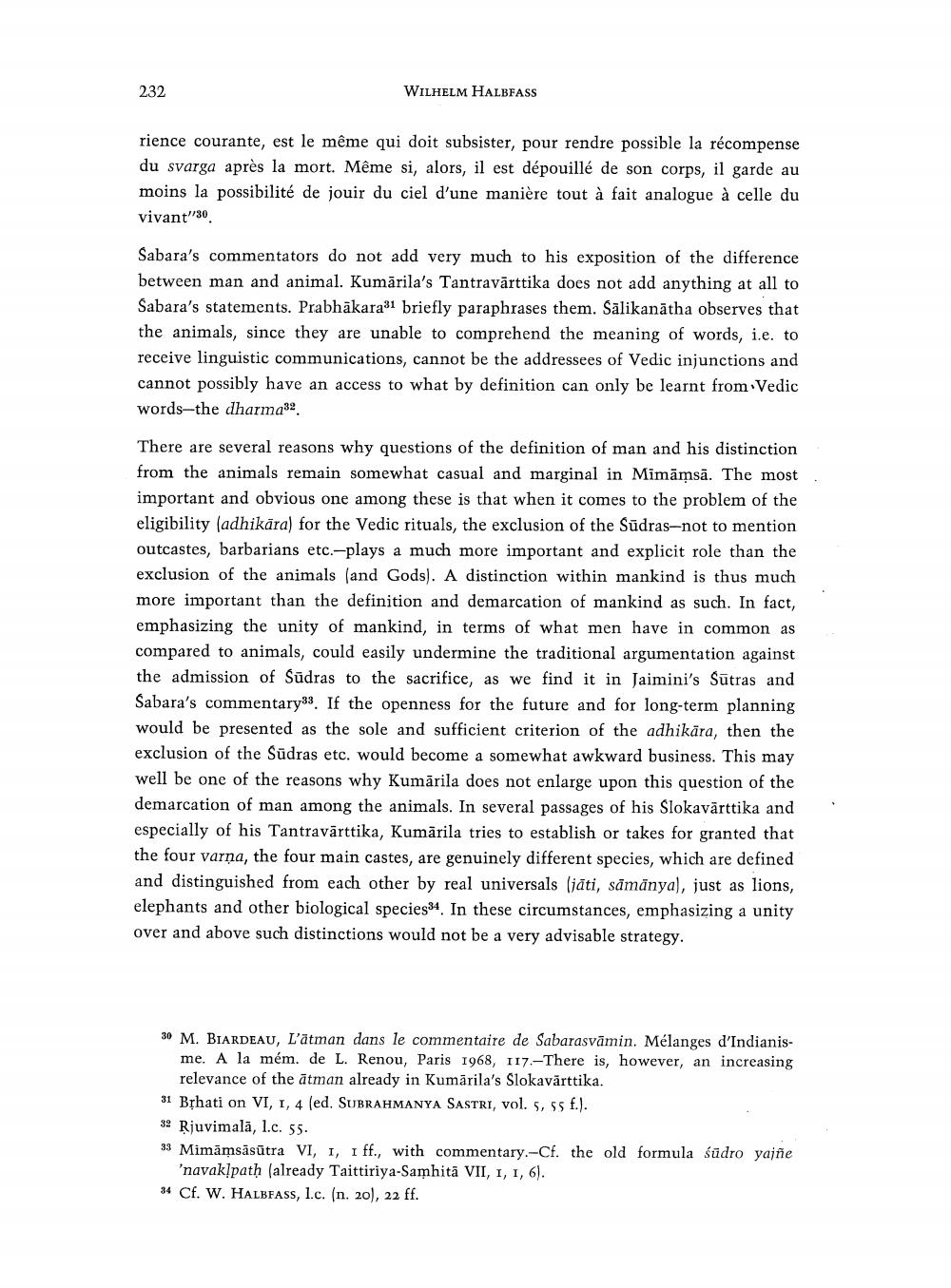Book Title: Anthropological Problems In Classical Indian Philosophy Author(s): Wilhelm Halbfass Publisher: Wilhelm Halbfass View full book textPage 8
________________ 232 WILHELM HALBFASS rience courante, est le même qui doit subsister, pour rendre possible la récompense du svarga après la mort. Même si, alors, il est dépouillé de son corps, il garde au moins la possibilité de jouir du ciel d'une manière tout à fait analogue à celle du vivant 30 Sabara's commentators do not add very much to his exposition of the difference between man and animal. Kumārila's Tantravārttika does not add anything at all to Sabara's statements. Prabhākara31 briefly paraphrases them. Sālikanātha observes that the animals, since they are unable to comprehend the meaning of words, i.e. to receive linguistic communications, cannot be the addressees of Vedic injunctions and cannot possibly have an access to what by definition can only be learnt from Vedic words-the dharma32 There are several reasons why questions of the definition of man and his distinction from the animals remain somewhat casual and marginal in Mimāṁsā. The most important and obvious one among these is that when it comes to the problem of the eligibility (adhikāra) for the Vedic rituals, the exclusion of the Sūdras-not to mention outcastes, barbarians etc.-plays a much more important and explicit role than the exclusion of the animals (and Gods). A distinction within mankind is thus much more important than the definition and demarcation of mankind as such. In fact, emphasizing the unity of mankind, in terms of what men have in common as compared to animals, could easily undermine the traditional argumentation against the admission of Sūdras to the sacrifice, as we find it in Jaimini's Sūtras and Sabara's commentary33. If the openness for the future and for long-term planning would be presented as the sole and sufficient criterion of the adhikära, then the exclusion of the Südras etc. would become a somewhat awkward business. This may well be one of the reasons why Kumārila does not enlarge upon this question of the demarcation of man among the animals. In several passages of his Slokavārttika and especially of his Tantravārttika, Kumārila tries to establish or takes for granted that the four varna, the four main castes, are genuinely different species, which are defined and distinguished from each other by real universals (jāti, sāmänya), just as lions, elephants and other biological species34. In these circumstances, emphasizing a unity over and above such distinctions would not be a very advisable strategy. 30 M. BIARDEAU, L'atman dans le commentaire de Sabarasvāmin. Mélanges d'Indianis me. A la mém. de L. Renou, Paris 1968, 117.-There is, however, an increasing relevance of the ātman already in Kumārila's Slokavärttika. 31 Bșhati on VI, 1, 4 (ed. SUBRAHMANYA SASTRI, vol. 5, 55 f.). 32 Rjuvimalā, 1.c. 55. 33 Mimämsäsutra VI, I, I ff., with commentary.-Cf. the old formula śüdro yaiñe 'navak]path (already Taittiriya-Samhita VII, 1, 1, 6). 34 Cf. W. HALBFASS, 1.c. (n. 20), 22 ff.Page Navigation
1 ... 6 7 8 9 10 11 12
